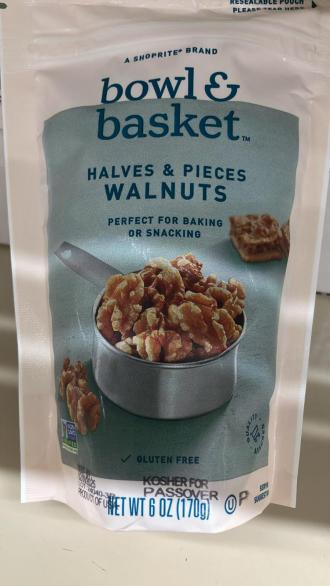Baltimore, MD - November 2, 2017 - I had the pleasure of meeting Baltimore native Jackie Spivack, of Efrat, Israel, during his month-long stay in Baltimore (until November 28), to attend the recent bris of his grandson. As he opened up two suitcases filled with an assortment of luxurious, leather-bound volumes—brightly colored, from cobalt blue to mustard yellow--he shared his fascinating life story and newfound profession with me.
Jackie was born in Baltimore in 1949. Because he was born hearing impaired, he couldn’t go to yeshiva; the Talmudical Academy (T.A.) could not accommodate him. It was only after he completed high school that P’tach created a program to fill the void in services offered for frum special needs children.
When he was living in Baltimore, Jackie davened at Congregation Shomrei Emunah. In fact, he was one of the 13 main founders of the now burgeoning shul. After the family moved to Seven Mile Lane area, they attended Bnai Jacob Shaarei Zion Congregation. The Spivacks have been living in Efrat for almost 32 years.
“I became an accountant, married a South African woman, and after living in Baltimore for a while, we moved to Israel,” shares Jackie. “I was working for the government and gave up all my luxuries to move there.”
Jackie became a handyman when he moved to Israel, and then opened an aluminum business—dealing with windows and doors. He hired a deaf employee and gradually built up his business to include other services, like carpentry and the installation of security bars. Their third son, who likes carpentry, went into business with him and eventually took over the business when he retired from it.
“About seven years ago, I retired and went back to work; in Israel, it isn’t so easy to retire,” explains Jackie. “A couple years ago, somebody approached me and asked if I would be interested in doing bookbinding. I told him, ‘Leave me alone; I’m not interested in doing bookbinding.’”
But, this octogenarian bookbinder kept pushing Jackie, and a year ago Succos, Jackie’s curiosity—and the fact that looking at the four walls, after his morning Gemorah seder--finally got to him. He decided to check out this bookbinder’s operation. After six months of training, his company, “Smell and Feel the Leather”, was born.

“It was leather, not regular bookbinding,” clarifies Jackie. “This 80-something-year-old man, who produces approximately 400 books a year, taught me how to leather book bind. After learning the process, I went out on my own. Because of my hearing impairment, I am good with my hands. I can visualize; I can figure out things. I fell in love with leather bookbinding!”

As far as Jackie knows, he is only one of three Jewish high-quality leather bookbinders—not to be confused with ordinary bookbinders. This differentiation was obvious, to me, as Jackie had me attempt to rip two types of cheese cloth-like swatches of material that were part of the spines of two different books. I couldn’t believe how easily one of them deteriorated, when I ripped it. There was no comparison trying to rip the more expensive and durable “Irish cloth” material that Jackie uses in his book binding—it wouldn’t rip, no matter how hard I tried. No wonder my old, sentimental, pseudo-leather Artscroll siddur is falling apart!

Next, Jackie had me feel and smell a siddur that he customized for a customer. The rich, leather smell reminded me of the aroma that one senses upon walking into an expensive leather shoe store. That, too, set apart his authentic leather creations. He showed me both brand new and restored creations that he made.

Jackie continued to fill me in on the details of his life, as he showed me all types of luxurious treated hide samples-- snakeskin, cow skin, goatskin, and sheepskin—which would turn into very unique, hand-crafted, personalized keepsakes or gifts. He gets most of his leather from a distributor in Tel Aviv. The snake, he orders from Asia, online.
Since Jackie is handy, he was able to make his press machine, himself. He works out of his cottage home in Efrat.

“It takes me a minimum of 69 steps to create something like this,” says Jackie, showing me a leather-bound Artscroll siddur that retails for $550, which he sells for $450. “I try to make something different with each one. The style is based on a classic Renaissance-era binding process used by craftsmen in the late 16th-early 17th century. For some of my books, I combine Renaissance and Modern.

“I hope to work with ostrich skin—which has holes in it, left from the feathers,” continues Jackie. “I can’t wait to do that. It’s a very strong skin. It’s beautiful when you polish it.”

One of Jackie’s creations that he is most proud of, is the custom-made siddur he made for his wife-- complete with colorful place-holding ribbons and a removable, plastic-covered bookmark that bears the names of their children and grandchildren.

Most of Jackie’s customers come to him through word of mouth, although some find out about his expertise through Facebook. How much do Jackie’s one-of-a-kind leather-bound siddurim, machzorim, haggados, Perek Shiras, Tehilim, Haggadahs, Megillas, and Tanyas, among other seforim and books, cost? Actually, when you consider the lifespan of his creations—hundreds of years! --they are most economical. And, he guarantees his work.


“They start at $400; the most expensive ones are made of purple snakeskin,” notes Jackie, “since they are the most labor intensive. This is high quality work, and you get what you pay for. The siddurim and machzorim that you find in seforim shops that go for $25, for example, may appear to be leather-bound, but are not actually genuine leather. People don’t understand what a leather book is. When people see it, they can’t believe it.”




Jackie makes his own covers and chooses from an assortment of forty decorative papers for the first and last page inserts. He has his own machine for embossing the covers. The leather hides he works with are soft, allowing the book to remain opened. Many of them are ideal “coffee table books”—like the luxurious Beis Hamikdash one he made. The smaller the book, the harder it is to make.


A book takes many hours to create, and Jackie finds himself working, simultaneously, on numerous books at once—running from one to the next, for example, while the glue dries on each.

Before we part ways, as Jackie loads his colorful collection back into the suitcases, he points out, “If you daven from a siddur that has the smell and feel of real leather, it can remind you of the animal sacrifices brought thousands of years ago in the Beis Hamikdash, before tefilah was even instituted!”
To make an appointment with Jackie, please contact him by email, jackiespivack@gmail.com.















